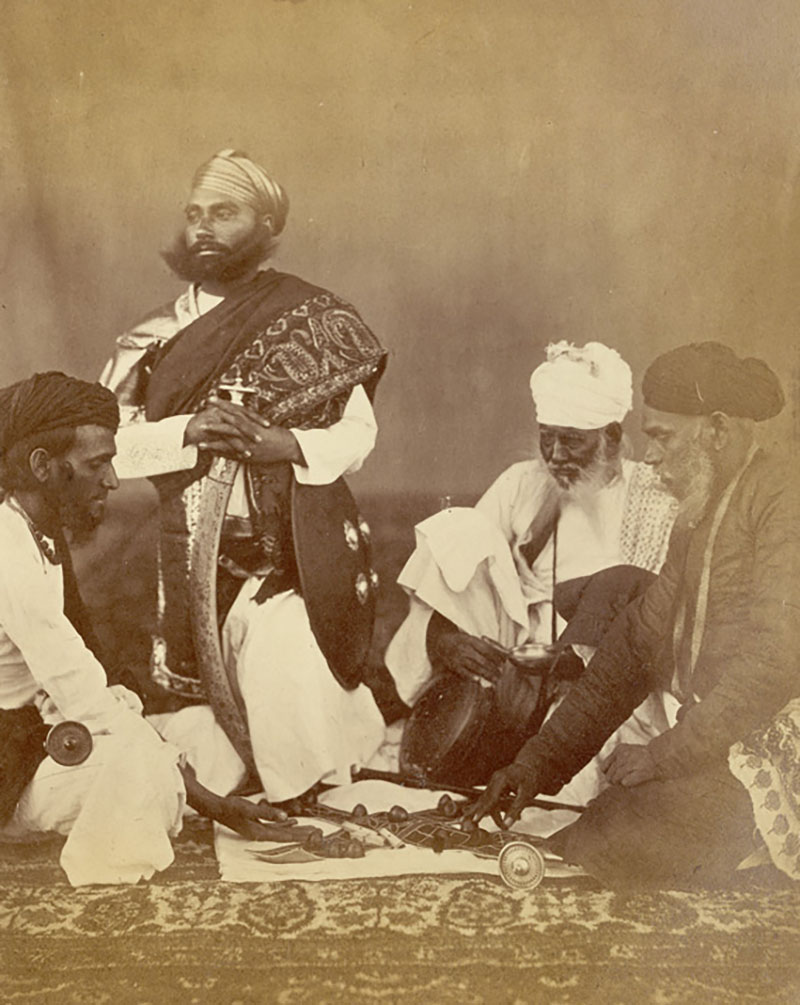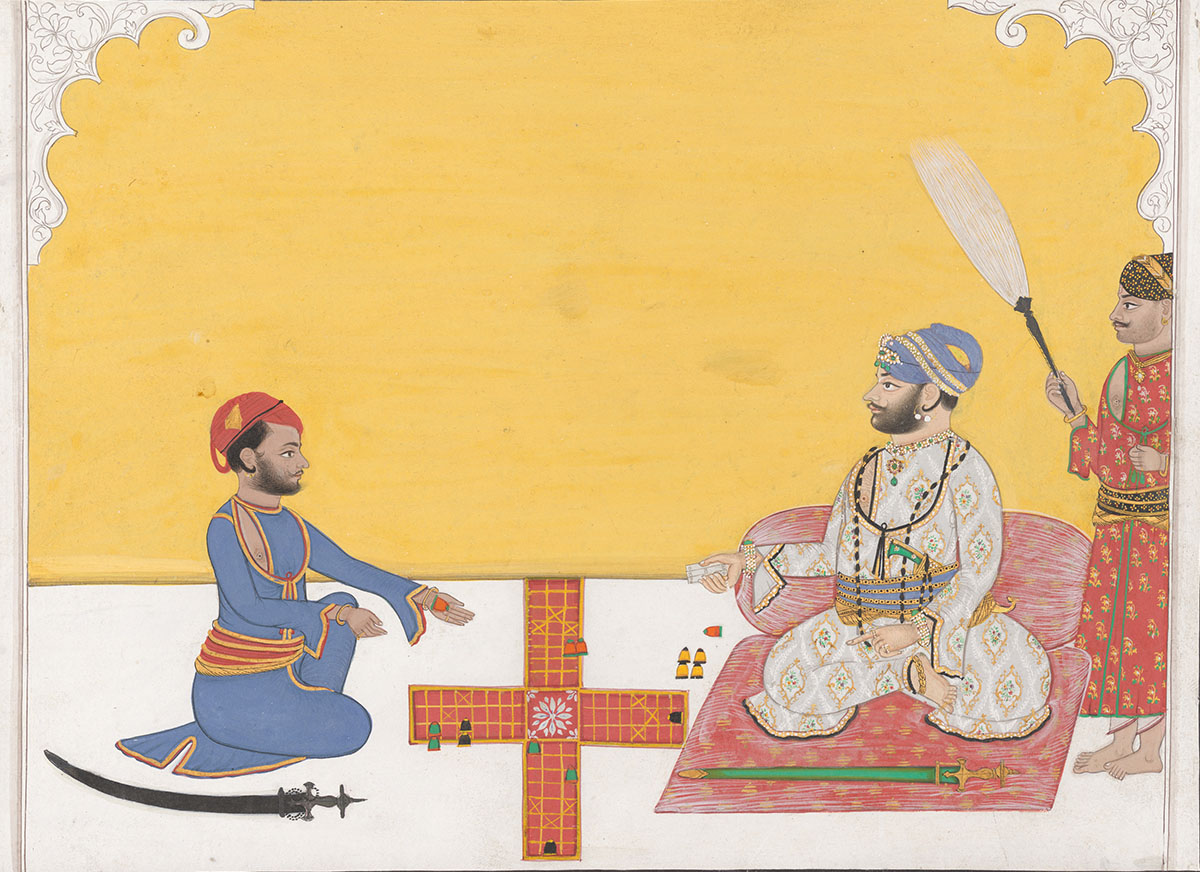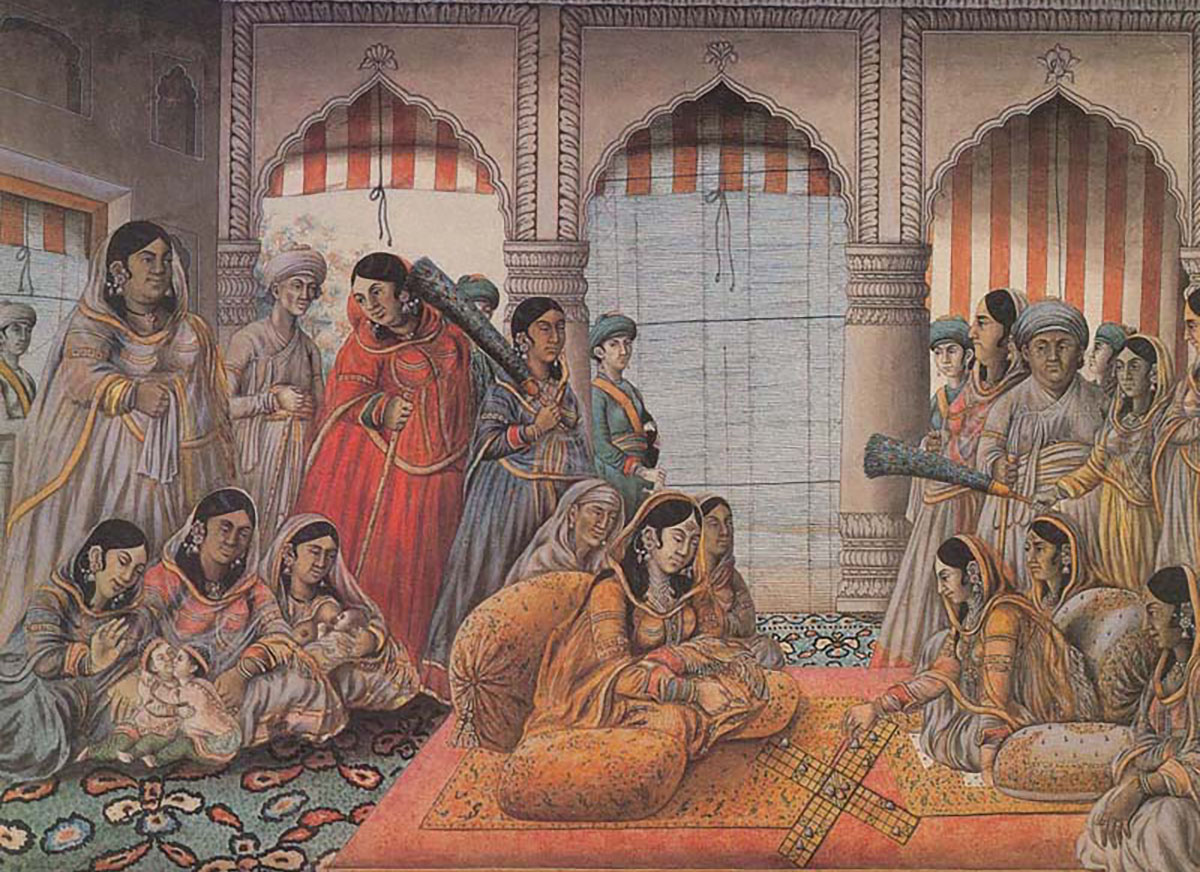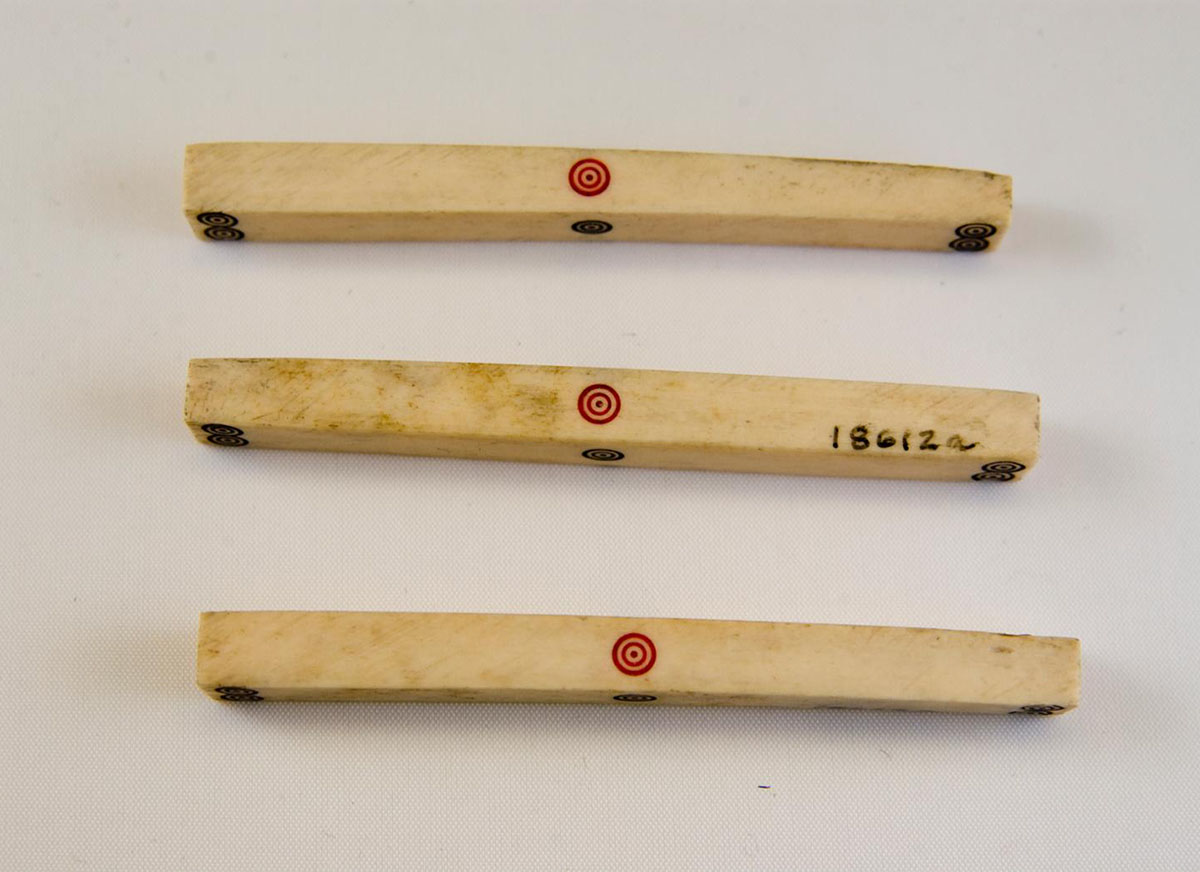ARTICLE
Pachisi
Capturing and blocking tokens is also a major component of the gameplay. An opponent’s token is considered captured when a player lands on the same square as that token. Captured tokens are sent back to the charkoni and have to begin the game anew. In some versions of the game, a token could only finish at the charkoni if it captured at least one enemy token during its time on the board.
Another Indian game similar to, and possibly also contemporaneous with pachisi, is chaupar (not to be confused with gyan chaupar), which uses stick dice in place of cowrie shells. Early European variations of pachisi include ludo, a British game invented in the late nineteenth century, and Mensch ärgere Dich nicht, an early twentieth-century German game. Later American adaptations of the game include Sorry! and Parcheesi.
Pachisi boards and tokens from various periods of Indian history can be found in the collections of the National Museum, New Delhi; the British Museum and the Victoria and Albert Museum, London, UK; the Swiss Museum of Games; the Children’s Museum of Indianapolis, USA; and in the Nasser D. Khalili Collection of Islamic Art.
Bibliography
Brown, W. Norman. “The Indian Games of Pachisi, Chaupar, and Chausar.” Expedition Magazine, 1964. https://www.penn.museum/sites/expedition/the-indian-games-of-pachisi-chaupar-and-chausar/.
Britannica, T. Editors of Encyclopaedia. “Pachisi.” Encyclopedia Britannica, January 19, 2018. Accessed 16 November, 2021. https://www.britannica.com/topic/Pachisi.
Falkener, Edward. Games Ancient and Oriental, and How to Play Them; Being the Games of the Ancient Egyptians, the Heira Gramme of the Greeks, the Ludus Latrunculorum of the Romans, and the Oriental Games of Chess, Draughts, Backgammon, and Magic Squares. New York: Dover Publications, 1961.
Mohr, Merilyn Simonds. The New Games Treasury: More Than 500 Indoor and Outdoor Favorites with Strategies, Rules and Traditions. Boston: Houghton Mifflin Company, 1997. https://archive.org/details/newgamestreasury0000mohr/page/68/mode/2up.
Srivastava, Mohit. “Towards a Cultural History of Indian Board Games: Backgammon, Chaupar and Chaturanga.” Sahapedia. August 15, 2019. Accessed 16 November, 2021. https://www.sahapedia.org/towards-cultural-history-indian-board-games-backgammon-chaupar-and-chaturanga.










